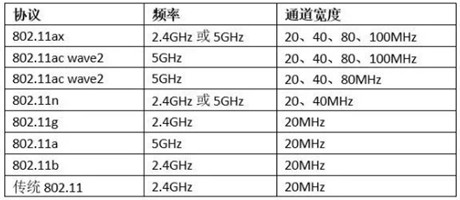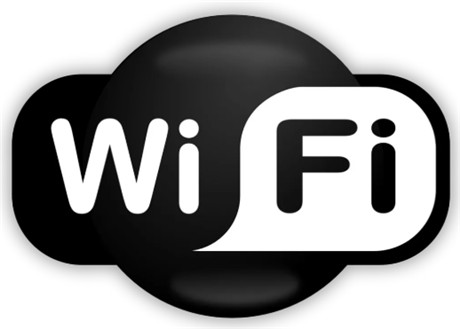Call Us Now
+8615914489090

According to foreign media reports, the European Commission has decided to expand the range of frequency bands that can be used for 5G applications. Research shows that both services are facing a shortage of available spectrum as demand for 5G and WiFi increases. For carriers and consumers, the more frequency bands, the cheaper the rollout of 5G, but Wi-Fi tends to provide more stable connections by comparison.
5G and WiFi are like racers on two tracks, from 2G to 5G, from the first generation of WiFi to WiFi 6, and now the two are complementary. Some people have suspected before that, with the advent of the G era, WiFi will enter a cooling-off period, but WiFi is now a network interwoven with 5G, and it is becoming more and more intense.

Sprinting WiFi IoT
In recent years, the global population growth has slowed down, and traditional mobile Internet devices represented by mobile phones are becoming saturated and growing slowly. As an extension of the Internet, the Internet of Things is bringing about a new round of connected devices, and the number of device connections itself also contains a lot of room for growth. ABI Research, a global technology intelligence market firm, forecasts that the global Wi-Fi IoT market will grow from about 2.3 billion connections in 2021 to 6.7 billion connections in 2026. The Chinese Wi-Fi IoT market will continue to grow at a CAGR of 29%, from 252 million connections in 2021 to 916.6 million in 2026.
Why does WiFi, which is thought to enter a cooling-off period, take off in the Internet of Things?
WiFi technology has been continuously upgraded, and its proportion in mobile device networking reached 56.1% at the end of 2019, occupying a mainstream position in the market. Wi-Fi is already nearly 100% deployed in smartphones and laptops, and Wi-Fi is rapidly expanding to innovative consumer electronic devices, vehicles, and other Internet of Things.
What we usually call WiFi is one of the corresponding 802.11 protocols. Different protocols support different frequency bands, and the introduced technologies are also differentiated iteratively. At present, almost all WiFi devices on the market can support the 2.4 GHz frequency band, and some routing devices can support the 2.4 GHz and 5 GHz frequency bands at the same time, and there are many protocol versions derived from 802.11, and there are also supplementary protocols for different scenarios.

WiFi protocol, operating frequency and channel width comparison table
For example, the 802.11ad-2012 ultra-high throughput protocol utilizes the 60GHz frequency band; the 802.11af-2014 TV white space protocol utilizes unused VHF and UHF bands; Large transmission distance, lower energy consumption, it uses MIMO-OFDM technology, the bandwidth is 16MHz, the highest rate can reach 347Mbps and so on.
As business applications such as video conferencing, wireless interactive VR, mobile teaching, and smart homes become more and more abundant, devices under a single WiFi network are becoming more and more crowded. Therefore, the WiFi network still needs to continuously improve the speed, be able to access more terminals, and adapt to the ever-expanding number of client devices and user experience requirements of different applications.
Now that WiFi 4 products are gradually withdrawn, WiFi 5 is accelerated, and WiFi 6 (E) is accelerated. In 2019, Huawei released the release of WiFi potential: 2019-2023 Enterprise-level WiFi 6 Industry Development and Prospect White Paper" said: Enterprise WiFi has undergone nearly 20 years of development. The development has achieved great success. The greatest contribution of WiFi is to liberate people from the traditional wired network and provide various services for individual users, enterprises and operators. Globally, WiFi carries more than half of all data traffic.
In China, these 1.4 billion people account for about 40% of the global Wi-Fi IoT market. This points to a promising Wi-Fi ecosystem in China, where Wi-Fi-enabled apps and services will be driven by the proliferation of IoT.
WiFi subdivision track
WiFi has been around for more than 20 years, and while WiFi is now ubiquitous, the rapid growth of the Internet of Things has made us think new about traditional WiFi. WiFi is currently mainly divided into two categories, one is high-performance WiFi, such as WiFi 5, WiFi 6, and the other is low-power WiFi, such as WiFi HaLow.
High-performance WiFi is characterized by low latency, fast speed, and strong battery life. Now almost every family needs more and more devices connected to WiFi, and almost every family has devices for watching videos. When a large number of devices are connected to the same WiFi network, it will cause network freezes, and high-performance WiFi is introduced. The MU-MIMO technology improves the total throughput and capacity of the network, and greatly improves the terminal Internet access speed.
2020 is the first year of 5G and the first year of WiFi 6. The emergence of WiFi 6 reflects higher and more secure performance, and the emergence of this technology is also considered to be a key point for the further development of the entire Wi-Fi industry. Domestic and foreign manufacturers also quickly launched products with related technologies. For example, Huawei released a router supporting WiFi 6+ technology; Qualcomm released a new WiFi 6E solution. In the future, education, medical care, and government systems will all ride on the express train of the Internet of Everything. This type of high-performance WiFi will be a wise choice for enterprises.

Compared with the IoT connection and application of WiFi 6 in indoor scenarios, the requirement for long-range connectivity and low power consumption in today's growing number of IoT-to-machine (M2M) applications is driving the need for another type of WiFi. As a representative of low-power solutions, WiFi HaLow fills the gap in this area.
Low-power WiFi is characterized by long distance, low power consumption, and large capacity. WiFi HaLow is the 802.11ah protocol, a special protocol for IoT scenarios in the 802.11 protocol family. 802.11ah works on ISM channels in the Sub-1GHz band. 802.11ah, although not very successful commercially, has been successful in large types of connections.
For sensor network connection scenarios, one is that there are many nodes, and the other is that sensors are usually powered by batteries and have strict energy-saving requirements. The Wi-Fi HaLow standard uniquely combines energy efficiency, long-range connectivity, low latency, high-definition video quality data rate, security features and Native IP support makes it an ideal protocol choice for wirelessly connected, battery powered IoT devices.
Wi-Fi HaLow has better and farther network coverage than 2.4GHz Wi-Fi, enabling some use cases that Wi-Fi cannot. Wi-Fi HaLow also provides new options or additions to devices in other unlicensed bands. The certification of Wi-Fi HaLow also ensures the interoperability and security of devices, and promotes the industrialization of Wi-Fi HaLow.
write at the end
In 2019, 5G and WiFi 6 entered the first year of commercial use. Cellular communication technology has been fully upgraded from 4G to 5G, and WiFi 6 has become the standard in the 5G era. From the perspective of the current number of Internet of Things connections, thanks to the characteristics of low cost, in the Internet of Things Under the condition that the number of network connections maintains a high compound growth rate, WiFi will be the first industry to benefit from the Internet of Things market, and the market prospect is broad.
The next version of the 5G standard, Release 16, will prioritize IoT-centric features such as sub-4ms latency and very high availability to support emerging in the URLLC (Ultra Reliable Low Latency Communication) category condition. And WiFi is also waiting for the priority allocation of 6G spectrum, and is already shouting: Hurry up!
References:
Knowing Sanity: "In-depth understanding of WiFi (6): 802.11 protocol family"
WiFi Learner: "802.11ah (HaLow) Protocol Analysis 1: Protocol Introduction"
Dao Heshun Big Data Infinigo: "Knowledge Sharing! The Difference Between Wi-Fi HaLow and Traditional Wi-Fi"